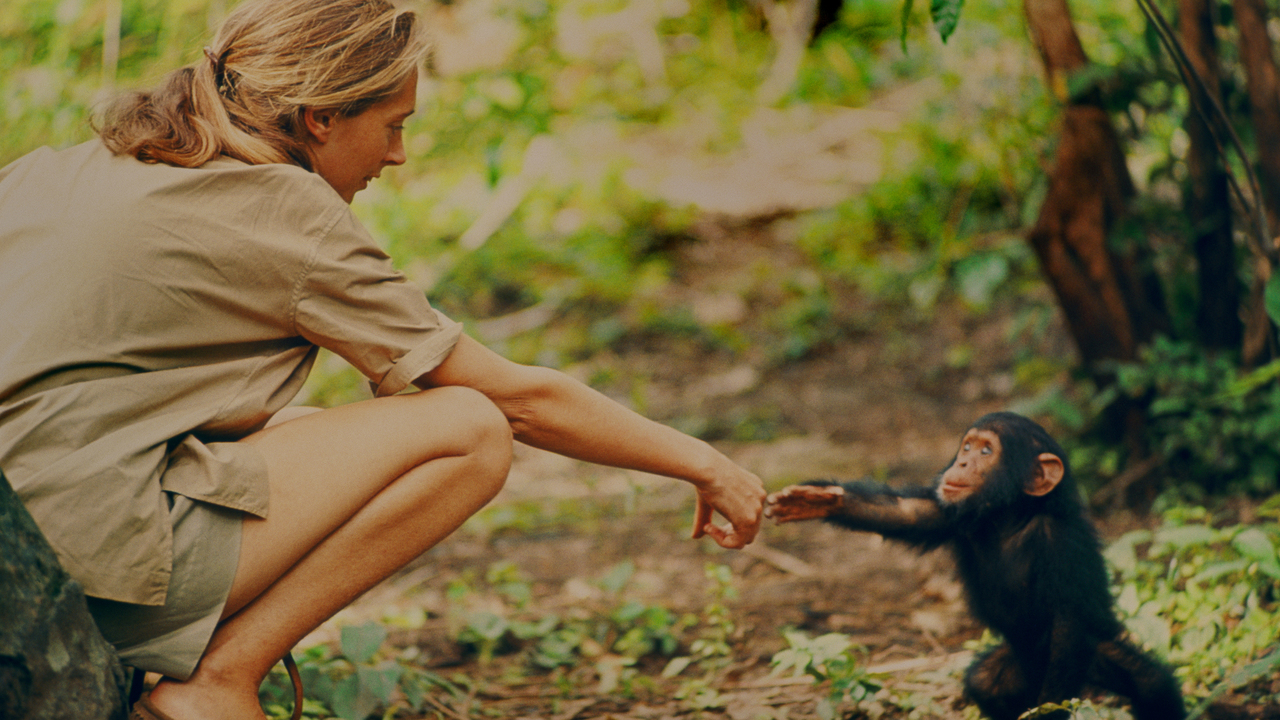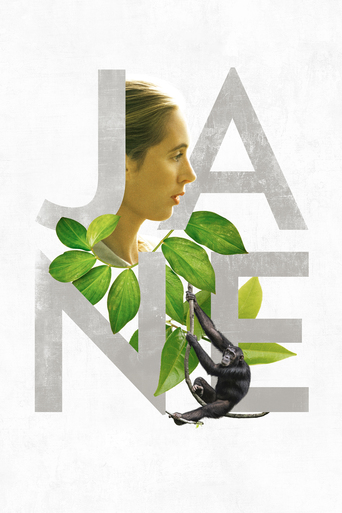

Jane Goodall is a pioneer of primatologist. Her work was controversial at the time for many reasons. In this documentary, Jane does the narration with occasional questions from the interviewer. She goes into detail about her life and thoughts.Jane was a remarkable and fearless woman and has been my idol since childhood. This is a beautiful look into her life. Some say the found footage is posed... of course it is. It's cut pieces of various National Geographic documentaries about her work. It was used to help bring them funding by focusing on a brave, beautiful young woman facing the hardships alone. There are naturally some posed shots. Also some personal home movie type shots. And some of the iconic footage at the end that are so well known.
... View MoreSomeone found a box of unused film clips that Jane Goodall's husband, cinematographer Hugo van Lawick, had left in a box and decided to piece them together into another Jane Goodall documentary. You'll see why van Lawick left them in a box because they are posed shots of Jane looking through binoculars, climbing trees, washing her hair, looking through binoculars, walking through the jungle, looking through binoculars, playing with a chimp, looking through binoculars, and looking through binoculars. Only reason to watch this is an attempt to induce an aneurysm.
... View MoreJANE is a simply titled documentary about the life and career of naturalist Jane Goodall. Director Brett Morgen does a very fine job of sifting through hundreds of hours of footage to illustrate his movie. Interviews (both original and period) are layered over the clips to bring her story to life.The plain title is appropriate for Goodall wasn't a scientist by training, but, a secretary who got the attention of renowned paleontologist Louis Leakey (curiously, mentioned little in the doc). Goodall couldn't provide a scientific background, but she convinced him that her lifelong passion for animals would make her a good research assistant. What followed, is one of the greatest studies of animals in nature. Hard to believe today, but her initial expeditions are considered the first in depth studies of primates in the wild - in history. Beginning in the late 1950s and continuing to this day, Goodall and her team have studied chimpanzees in Gomba Tanzania. National Geographic sent photographer Hugo van Lawick (later, her husband) to shoot 16mm film beginning in the early 60s. It is that footage that provides the bulk of the photographic evidence of her studies. Much of the footage had been in vaults, uncatalogued, for decades. Fortunately, those vaults seem to have been well-preserved, for the film looks stunning on the big screen. In fact, some sections of the documentary look so utterly perfect (and capture intimate moments so precisely), that you almost swear it had to be faked! The 60s scenes (which also includes footage Hugo shot in the African Serengeti) are the most fascinating in this rather brief doc (90 minutes). JANE is very much an authorized account. Only a couple of mentions of the controversy in the scientific community about her methods are covered, and only scantily. Still, give credit to Morgen, and Goodall herself, for showing how career driven she was - and remains. It's quite clear that both Goodall and Hugo put their careers above their personal lives (they even bring their baby up in the wilds of Africa rather than return home for a 'normal' upbringing). Morgen also is a bit sloppy with the chronology of the footage including a newspaper account which mentions that she is married - before she even met Hugo in the story-line (oops!). More problematic is Philip Glass' music. One of the great minimalist composers, and the writer of several fine film scores, Glass here tends to overwhelm the largely gentle tone of the doc. Further, Morgen also made the decision to do a full soundtrack to back the footage, the vast vast majority of which is silent. It works for the most part, but, in conjunction with Glass' overbearing music seems out of register. Minor points, but, significant enough.Jane Goodall and her work has been in the public eye so long, that one might feel that she is of the past. But, like the woman herself, JANE makes her very much alive and vital.
... View MoreRelying heavily upon previously unseen footage from the film vaults of National Geographic, this release will be of interest to people who have followed Dr. Goodall's groundbreaking work. To the same audience, however, much of the narrative will already be familiar. To my mind, it is best seen as an appendix to the fine work that has already been done in documenting the now legendary story of Jane Goodall rather than as a definitive synopsis of her career. Given that much of the visuals are over half a century old, younger audiences especially might have difficulty reconciling the production values of mid-twentieth century field location footage with the high expectations engendered by the modern cinema experience. Where this film shines, and the reason I would encourage people to see this film in a cinema, is the sound. The score (by the inimitable and immediately recognizable Phillip Glass) is itself compelling, and appropriately mirrors the emotional cadence of the visual narrative. The sound design and editing, apart from the music, however, is truly brilliant. The theater erupts in a chorus of chimpanzee cries, among other jungle soundscapes, in many parts of the movie, and I almost felt the need to turn around to see what might be behind me at some points. Glass also cleverly weaves chimp calls into the score in a syncopated "cat's cradle" of rhythm at one point, which brought a smile on my face by mere virtue of its compositional ingenuity; this film is "ear candy." That being said, despite the many out of focus and grainy shots, there are some truly breathtaking visuals in the movie provided by Hugo van Lawick, Dr. Goodall's original videographer and eventual (ex)husband. The most breathtaking stuff comes from the Serengeti, and is therefore ancillary to Dr. Goodall's work the Gombe Reserve, but is still important in the personal narrative of her life. You will not see a more intimate portrayal of Dr. Goodall's journey elsewhere however, despite the miles of celluloid devoted to her. Anyone who reads her books will already be familiar with the story disclosed in the story line itself, including the incalculable value of the influence of Dr. Goodall's mother, but the footage of "Mum" in camp at Gombe will be a treat for those who have hitherto only known her as a character mentioned in prose, passing dialogue in a previous documentary, or mention in one of Dr. Goodall's innumerous public appearances. While much of the visual media of this film is novel, and the narrative itself mostly familiar, the presentation is likely to entertain, if not inform, almost any viewer. Modern audiences are cautioned to understand that this is not a film that relies upon computer- generated special effects, explosions, and a vast post-production budget beyond restoring and improving half- century old celluloid reels. It will very likely succeed in evoking an emotional response, which is, after all, the aim of any artistic work. That Dr. Goodall's entire career succeeds in the same vein is a powerful argument for the assertion that her life itself must be viewed as a contribution to art as much as to science.
... View More